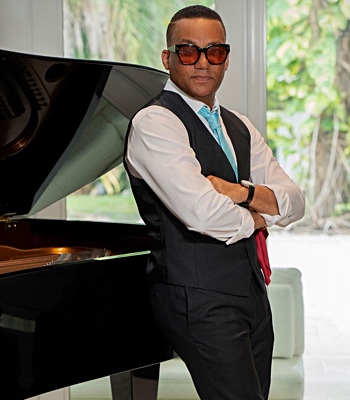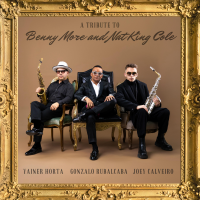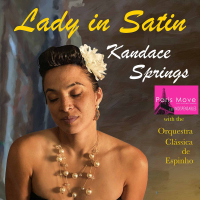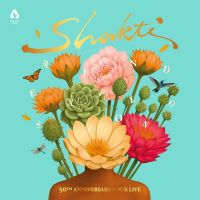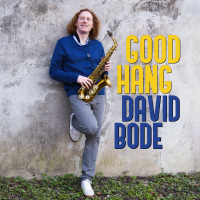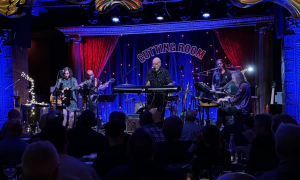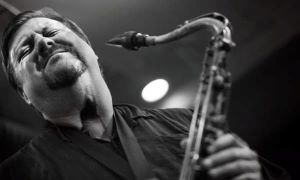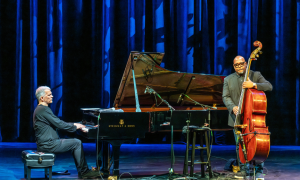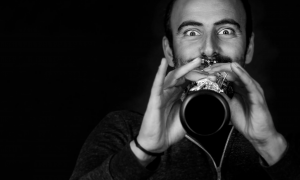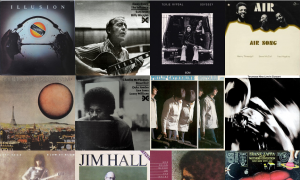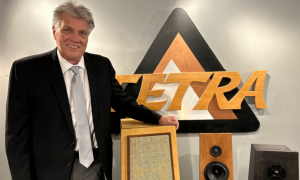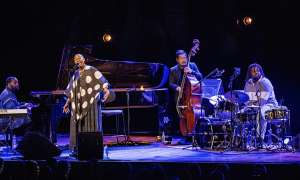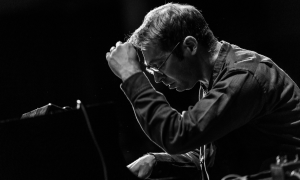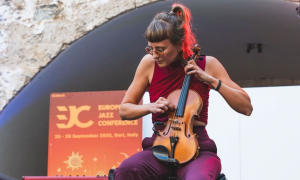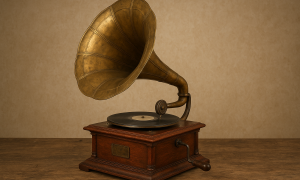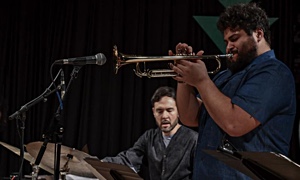Home » Jazz Articles » Live Review » Day 8 - Ottawa International Jazz Festival, June 29, 2006
Day 8 - Ottawa International Jazz Festival, June 29, 2006
Day eight of the TD Canada Trust Ottawa International Jazz Festival saw the welcome return of one artist, the first time appearance of another, and an exciting and spiritual performance by a jazz legend.
 When guitarist Rez Abbasi played at The Bayou eighteen months ago, the performance was marred by assorted technical problems—all the responsibility of the club. Organist Gary Versace was situated so far back that it was difficult, if not impossible, for him to hear what was going on in front of him. Drummer Danny Weiss was provided with a drum kit that might have been a good starter kit, but for an accomplished player was almost an embarrassment. Sing Kiran Ahluwalia struggled with the single monitor mix available on stage and, like Versace, often either unable to hear the rest of the band clearly—or, for that matter, herself. Abbasi struggled with similar problems—a stage mix that simply wasn't conducive to the kind of interplay that defines Abbasi's remarkable fusion of Indo/Pakistani music with western jazz harmonies.
When guitarist Rez Abbasi played at The Bayou eighteen months ago, the performance was marred by assorted technical problems—all the responsibility of the club. Organist Gary Versace was situated so far back that it was difficult, if not impossible, for him to hear what was going on in front of him. Drummer Danny Weiss was provided with a drum kit that might have been a good starter kit, but for an accomplished player was almost an embarrassment. Sing Kiran Ahluwalia struggled with the single monitor mix available on stage and, like Versace, often either unable to hear the rest of the band clearly—or, for that matter, herself. Abbasi struggled with similar problems—a stage mix that simply wasn't conducive to the kind of interplay that defines Abbasi's remarkable fusion of Indo/Pakistani music with western jazz harmonies. Still, despite the numerous roadblocks, they delivered a strong performance, but it was great to see the festival invite Abbasi and his quartet to play in the more acoustically sound theatre of Library and Archives Canada at the 4 pm Connoisseur Series. This time Weiss and Versace were provided with proper instruments, and all four were afforded separate monitor mixes, allowing everyone to hear what was going on around them. The result was a performance that was everything their first Ottawa appearance should have been—and more.
Still drawing primarily off Abbasi's most recent release, Snake Charmer (Earth Sounds, 2004)—there's a new record due out in the near future—what the group demonstrated is that, no matter how often a repertoire is played and replayed, in the right hands a fresh approach can be found every time.
Of course you have to have a group with the skill and imagination of Abbasi's quartet. Abbasi is a player who is well-versed in the jazz language, but studies in India have given him an appreciation of the lengthy, snakelike themes that wind their way through ragas, and equal respect for the metric complexity of traditional Indian music. Brought together, and with a powerful fusion edge that, refreshingly, doesn't rely on a stereotypically distorted guitar sound—if anything, Abassi's thick, warm tone is reminiscent of players like John Abercrombie and Pat Martino—Abbasi has the dexterity to deliver lightning-fast phrases and staggering intervallic leaps. He also, on occasion, plays in a more vertical fashion that's the opposite of so many guitarists' horizontal approach to the guitar neck, creating phrases that are distinctive because they wouldn't work any other way.
And while he clearly has the chops, his compositional approach to soloing means that even when he's pushing out lines with blinding speed they always make contextual sense.
Versace, gaining recognition with each passing year and just off a busy tour with guitarist John Scofield and his Ray Charles Tribute tour, is an advanced musical thinker. While, with Scofield he's proven himself capable of a more soulful approach to the organ that stems from Jimmy Smith, when left to his own devices he's a far more abstract player, more akin to organist Dan Wall—who he's replaced in recent years in John Abercrombie's organ trio. At yesterday's show he would often start solos with abstruse chordal shots or convoluted phrases but, like Abbasi, would evolve them into cogent larger-scale improvisations that were rife with intent.
Weiss is the hot young drummer on the New York scene, seemingly popping up everywhere these days. He's an intriguing blend of jazz looseness and rock energy. He's also no stranger to the Indian tradition, having released his remarkable solo album Tintal Drum set Solo (Chhandayan Production, 2005), transcribing a lengthy tabla piece to the conventional drum kit. At times playing with his fingers as if his drums were tablas, his ability to intuit what was going on around him was remarkable, sometimes driving things, other times responding so immediately it seemed as if he was linked telepathically with Abbasi and Versace.

Ahluwalia, with a number of records out under her own name, including Kiran Ahluwalia (Artemis Records, 2005)—her first international release, where she brings Punjabi folk songs into the 21st century—is a less frequent participant in the quartet, singing on only half of the set's seven tunes. But her wordless vocals were an integral part of the group's sound, and her improvisational acumen proved every bit as remarkable as those of her band mates, and her contributions no less important.
For those who saw that Bayou show eighteen months ago, along with the group's ability to bring fresh ideas to material that they've played for a considerable amount of time, what was most obvious at yesterday's show was just how much the group has opened up, letting the music breathe so much more. Part of that is due to Abbasi paring the group from a quintet that also featured saxophone to a quartet. But it's the group's ability to take the music to more abstract places—an achievement when one considers the knotty irregular meter of tunes like "Kismet —and the connection between everyone feels so much stronger. Abbasi's quartet feels like a group that, rather than being a collection of individual instruments, speaks with a single voice.
In a rock and pop world where youth seems to be one of the defining factors, and with few exceptions, aging rockers lose credibility, it's one of jazz's strengths that it has little, if anything, to do with optics. While there are those elderly jazz artists who seem content to rest on their stylistic laurels, there are others who consider their connection with music a real life's work, never retiring from music because it's such an integral part of who they are.
 In the case of woodwind multi-instrumentalist Yusef Lateef, who appeared a part of the Belmondo & Yusef Lateef Sextet at the 8 pm Improv Series at the National Arts Centre's Fourth Stage, it's clearly a spiritual journey as well. At one point during a sold-out performance—where, unfortunately, a number of people had to be turned away—Lateef stopped playing his multitude of instruments to sing a brief song that kept returning to the line, "Gonna get to the other side. Words that, hopefully, won't come true too soon for the octogenarian Lateef who may have walked a little slower but was still able to deliver a passionate performance, surrounded by a group of French musicians who were clearly thrilled to be playing with this legendary artist.
In the case of woodwind multi-instrumentalist Yusef Lateef, who appeared a part of the Belmondo & Yusef Lateef Sextet at the 8 pm Improv Series at the National Arts Centre's Fourth Stage, it's clearly a spiritual journey as well. At one point during a sold-out performance—where, unfortunately, a number of people had to be turned away—Lateef stopped playing his multitude of instruments to sing a brief song that kept returning to the line, "Gonna get to the other side. Words that, hopefully, won't come true too soon for the octogenarian Lateef who may have walked a little slower but was still able to deliver a passionate performance, surrounded by a group of French musicians who were clearly thrilled to be playing with this legendary artist. The sextet—also featuring brothers Lionel Belmondo (tenor and soprano saxophones, flute) and Stephano Belmondo (trumpet, bass trumpet, flugelhorn, conches) along with Laurent Fickelson (piano), Sylvain Romano (bass) and Dre Pallemaerts (drums)—delivered a 75-minute set that revolved, for the most part, around modal numbers that featured elaborate horn arrangements but were, more importantly, strong vehicles for some of the most passionate solos heard at this year's festival.
With a frontline of multi-instrumentalists, there was the opportunity for some diverse and beautiful blending of instruments—two flutes and flugelhorn at one point, trumpet, oboe and soprano sax another, and bass trumpet with two tenors at yet another. It also demonstrated the strong ability of the rhythm section—all fine soloists in their own right—to be dynamically attuned not just to what was being played, but to the overall texture of the front line's instrumental mix at any given time.
That a man in his mid-eighties can play with such strength as Lateef is remarkable. On tenor, in particular, his tone was bold. But whether he was playing saxophone, flute, wood flutes or oboe, it seemed as if every phrase—every note—was being squeezed out of the depths of his soul. His ability to build powerful statements, ranging from gently lyrical to aggressively spirited, never lost focus, with the Belmondo brothers, in particular, shouting out in affirmation during especially profound moments.
But as much as Lateef—who, like the Belmondo brothers, sat on a stool front and center---was an inescapable presence on the stage, the players around him, while less-known, were strong foils for his own exploratory style. Stephane Belmondo, in particular, constructed solos that, regardless of the instrument, were potent with possibility. His bass trumpet work, in particular, was notable because it's an instrument that's rarely heard and, with a range somewhere between a trumpet and a trombone, allows for the best of both worlds.
Romano—who, like many others playing at the festival, borrowed local bassist John Geggie's instrument—proved that while a good instrument is essential, the sound of the instrument is more than just its own qualities. It's also not about the obvious differences in playing style. It's just as much a matter of physiology, touch, density of fingers, etc. that determine how an instrument sounds, and in Romano's hands, Geggie's bass sounded warm and rich. His support in the rhythm section was unmovable, and he took a lengthy solo at one point that managed to be both thematically strong and, ultimately, exciting as well.
 The majority of the set revolved around lengthy modal vamps but the melodies, arranged for the various front line configurations, elevated them beyond mere vamping. And the interplay between the rhythm section and whoever was soloing was not just something you saw—though that was clearly obvious—but something you felt. Fickelson, in particular, straddled the line between McCoy Tyner's block chord approach and Herbie Hancock's greater abstraction.
The majority of the set revolved around lengthy modal vamps but the melodies, arranged for the various front line configurations, elevated them beyond mere vamping. And the interplay between the rhythm section and whoever was soloing was not just something you saw—though that was clearly obvious—but something you felt. Fickelson, in particular, straddled the line between McCoy Tyner's block chord approach and Herbie Hancock's greater abstraction. But while the focus of the set was on modality, the color blue was a major part of the nearly 90-minute set. The sextet played a more conventional blues structure for its final number, although the front line of oboe, soprano saxophone and flugelhorn made it anything but conventional. At the end of the tune the audience gave the group a well- deserved standing ovation, and it was clear that Lateef was appreciative. While it was unfortunate that they were unable to perform an encore, Lateef was seen afterwards signing CDs and LPs and talking to a group of people surrounding him. A beautiful way to end one of the highlights of this year's festival.
Sweden's Esbjörn Svenson Trio, or EST as they have come to be known, made their first appearance at the 10:30 pm Studio Series at the National Arts Centre. They've played Montreal before on more than one occasion, and have consistently wowed audiences with their approach, which has its roots as much in popular music as it does in jazz. Pianist Svensson, in fact, has been known to describe the trio—also featuring bassist Dan Berglund and drummer Magnus Oström—as a pop band playing jazz. They're often compared to American counterparts The Bad Plus, but have always been a generally more elegant alternative to TBP's aggressive stance.
 EST—friends since childhood—has been together for nearly fifteen years now, and while their popularity continues to climb, especially in Europe where they have sold hundreds of thousands of records, they may be starting to stall. They are becoming more choreographed in their performances, and there are certain defining characteristics that you can expect to hear at every concert, in particular Berglund's penchant for distorting his acoustic bass and then bowing it aggressively. Then again, Berglund has, in interviews, cited heavy metal bands as one of his influences, so this edgy solo approach is no surprise.
EST—friends since childhood—has been together for nearly fifteen years now, and while their popularity continues to climb, especially in Europe where they have sold hundreds of thousands of records, they may be starting to stall. They are becoming more choreographed in their performances, and there are certain defining characteristics that you can expect to hear at every concert, in particular Berglund's penchant for distorting his acoustic bass and then bowing it aggressively. Then again, Berglund has, in interviews, cited heavy metal bands as one of his influences, so this edgy solo approach is no surprise. But what differentiated EST in past years was their ability to integrate accessible writing, strong playing, and electronic processing that was a subtle enhancer. At last night's performance it became clear that, these days, the signal processing is taking greater prominence. And that's not necessarily a good thing.
The trio performed material that, aside from a buoyant version of an older tune called "That Rube Thing, was culled from their most recent records—Strange Place for Snow (ACT, 2002), Seven Days of Falling (ACT, 2003) and Viaticum (ACT, 2005). And while songs like "The Unstable Table & The Infamous Fable began with a classicism that featured Svensson's right hand arpeggios supporting a left hand theme doubled by Berglund, it quickly evolved into a more aggressive piece, despite Oström remaining on brushes throughout.
Svensson seemed enthralled with applying, at times, a touch of distortion to his grand piano, resulting in a buzzing sound that was more annoying than innovative. Still, he's a fine player, capable of melancholy lyricism on the ever-so-slightly countrified ballad, "Believe, Beleft, Below. And when he applied heavy reverb to expand his instrument spacially, seeming to fill the room with a dark, warm sound, it was most appropriate. Oström also applied some signal processing to his kit and percussion, creating a great wash of noise.
And there's nothing wrong with processing—or using it to create more jagged sonics for that matter. But whereas some groups integrate the processing so that it becomes a seamless and organic part of the overall sound, at this point EST's balance, in most cases, makes their application of sound modification stick out like a sore thumb.
Still, that doesn't detract from the trio's clear ability. Oström is a fine drummer who may not swing conventionally, but has his own approach to time that grooves whether the song is delicate or jarring. Berglund's tone is full-bodied and while he's sometimes called upon to repeat challenging patterns endlessly while Svensson solos over top, he also demonstrates an ability to create simple support lines that are really about the right note at the right time—and for the right length of time, with Berglund comfortable in letting a note decay slowly before moving on.

Still, the show attracted an extremely appreciative full house—an audience where gray (or no) hair was not in the majority. Along with the equally well-received Wibutee earlier in the week and tomorrow night's show with Norwegian Nu Jazz icon, trumpeter Nils Petter Molvaer, it's clear that the festival organizers are taking the issue of attracting a younger demographic more seriously, and that bodes well for future years.
Visit Rez Abbasi, EST and the TD Canada Trust Ottawa International Jazz Festival on the web.
Photo Credit
John Kelman
Tags
PREVIOUS / NEXT
Support All About Jazz
 All About Jazz has been a pillar of jazz since 1995, championing it as an art form and, more importantly, supporting the musicians who make it. Our enduring commitment has made "AAJ" one of the most culturally important websites of its kind, read by hundreds of thousands of fans, musicians and industry figures every month.
All About Jazz has been a pillar of jazz since 1995, championing it as an art form and, more importantly, supporting the musicians who make it. Our enduring commitment has made "AAJ" one of the most culturally important websites of its kind, read by hundreds of thousands of fans, musicians and industry figures every month.


